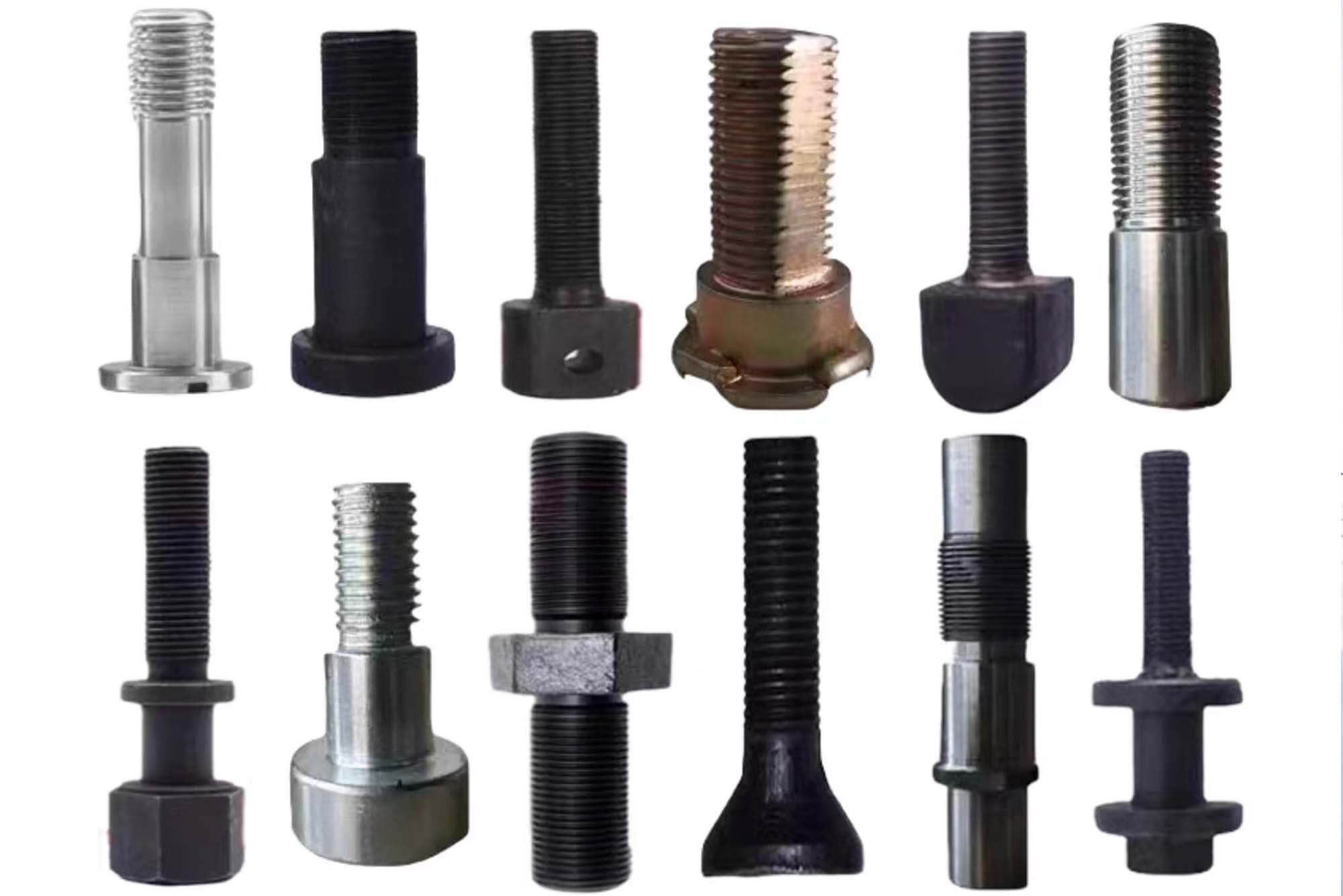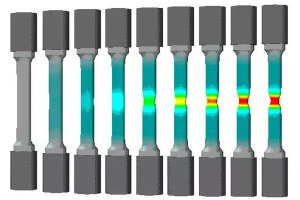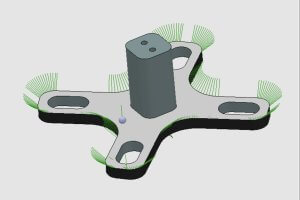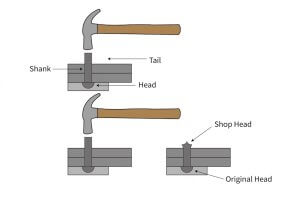Introduction: Why Nuts and Bolts Are More Complex Than They Look
If you’ve ever walked into a machine shop or looked at a mechanical assembly, you’ve probably noticed one thing immediately: nuts and bolts are everywhere. It might seem like these tiny parts are just simple hardware, but from experience, I’ve learned they’re a lot more complicated than most people realize.
I’ve spent plenty of time around machining centers, lathes, and CNC machines. Early on, I underestimated how complex nuts and bolts machining could be. But the more I learned, the clearer it became that machining these components properly is crucial.
Nuts and bolts hold structures together under stress, vibration, heat, and countless other conditions. A poorly machined bolt or nut can literally cause assemblies to fail. I’ve seen it happen—threads stripped, heads cracked, or components damaged beyond repair.
So, in this guide, I’ll share everything I’ve learned about machining nuts and bolts. We’ll explore methods, CNC tips, design considerations, standards, and more. Whether you’re an engineer, machinist, or a student, you’ll find practical information you can use right away.
Let’s dive in.
Common Types of Nuts and Bolts
When people search for “nuts and bolts,” they typically imagine standard hardware-store items. But in reality, there are dozens of varieties. Knowing these types helped me choose the right machining processes.
Nuts
Common nuts include:
- Hex Nuts: Most common; hexagonal shape for easy wrenching.
- Flange Nuts: Wider surface, distributes load better.
- Lock Nuts: Special nuts designed to resist vibration and loosening.
- Coupling Nuts: Long nuts connecting threaded rods.
- Wing Nuts: Easy to tighten or loosen by hand.
- T-Nuts: Designed for fitting into T-slots, like in machine tables.
Bolts
Some typical bolts I’ve frequently machined or worked with:
- Hex Bolts: General-purpose, hex-head bolts.
- Socket Cap Bolts: High-strength bolts with recessed hex sockets.
- Carriage Bolts: Round heads with square necks to prevent rotation.
- Shoulder Bolts: Bolts with precision machined shanks.
- Eye Bolts: Loop-headed bolts for lifting or rigging.
- Stud Bolts: Threaded rods without heads, often used with nuts.
Different nuts and bolts need different machining processes, tolerances, and techniques. I quickly realized how important choosing the correct machining approach was—something I’ll discuss later.
Machining Processes for Nuts and Bolts: Overview and Comparison
Machining “nuts and bolts” involves various methods. Below is a simplified yet comprehensive breakdown of the methods I’ve commonly used or supervised.
| Method | Ideal Application | Accuracy | Efficiency | Typical Equipment |
|---|---|---|---|---|
| Turning (Lathe) | Custom bolts/nuts | High | Medium | CNC Lathe, Manual Lathe |
| Milling | Special threads or shapes | Moderate | Lower | CNC Machining Center |
| Thread Rolling | Mass-produced bolts | Very high | Very high | Thread Rolling Machines |
| Tapping | Internal nut threads | High | Medium | Tapping Machines |
| Cold Heading | Mass production standards | Good | Highest | Cold Header Equipment |
Turning Nuts and Bolts
Turning is the method I often prefer for small batches or precision fasteners. Using CNC lathes, I’ve achieved very tight tolerances, often within ±0.005 mm. It’s precise but somewhat slow for mass production.
Milling Special Shapes
For bolts or nuts with unusual shapes or unique threads, milling is my go-to method. It offers great flexibility. But milling takes more time than turning or cold forming, making it less ideal for high-volume work.
Thread Rolling: High Volume Precision
When production volume scales up, thread rolling dominates. I’ve found this process efficient, cost-effective, and reliable. Rolling compresses threads into shape, resulting in superior strength compared to cut threads.
Tapping Internal Threads
Internal threading (tapping) in nuts is another method I’ve frequently used. Proper tool selection and careful feed control helped me minimize broken taps and scrapped parts.
Cold Heading for Efficiency
Cold heading is the method behind most standard hardware-store bolts and nuts. Extremely fast and cost-efficient, it shapes metal by cold forming rather than cutting. However, it lacks the flexibility of machining for special designs.
This comparison helped me and my team consistently select the right machining method based on the project’s needs.
CNC Machining Tips for Nuts and Bolts
CNC machining nuts and bolts might seem straightforward at first glance. But I’ve learned from experience that precision, tool selection, and proper programming dramatically influence the final product.
Threading G-Codes and CNC Cycles
In my CNC experience, threading cycles are fundamental. If you get them right, production is smooth and parts are precise. For external threading, like bolts, I often use the G76 threading cycle. Here’s a simple example I’ve personally used:
gcode
O1001 (External threading M12x1.75)
G00 X14.0 Z5.0
G76 P010060 Q0.05 R0.02
G76 X10.2 Z-25.0 P0.75 Q0.3 F1.75
M30
This CNC program creates an M12 standard metric bolt thread quickly and accurately.
Internal threads, such as those in nuts, usually require a tapping cycle like G84. Here’s a simplified example:
gcode
O2002 (Internal tapping M10x1.5)
G00 Z5.0
G00 X0 Y0
G84 Z-20.0 R5.0 F1.5
G80
M30
These cycles consistently give me accurate results, provided tools and fixtures are correctly set.
Fixturing Nuts and Bolts in CNC Machines
Securing nuts and bolts during machining can be tricky. I’ve learned a few fixturing methods that prevent slipping and ensure accuracy:
- Collet Chucks: Ideal for bolts; grips the shank securely.
- Custom Fixtures: Perfect for hex nuts; holds workpieces firmly without damaging threads.
- Magnetic Fixtures: Suitable for small batch nuts and bolts with complex shapes.
Early in my career, loose fixturing caused thread inaccuracies, ruining entire batches. Since then, I’ve prioritized secure fixturing.
Tool Selection and Wear Management
Threading tools wear out faster than you’d expect, especially with hardened bolts. I recommend carbide threading inserts—they last longer and provide excellent finishes. For stainless steel bolts, specialized coated carbide tools greatly reduce wear.
I regularly inspect threading tools after every batch of about 100 parts. This simple habit has significantly improved thread quality and reduced scrap rates.
Design for Manufacturability (DFM): Making Fasteners Easier to Machine
One crucial lesson I’ve learned is that a well-designed nut or bolt reduces machining complexity and production cost dramatically.
1.Thread Start and Chamfer Designs
Chamfering the thread start point prevents cross-threading. In practice, adding a 45° chamfer at the start of the bolt and nut threads has dramatically reduced assembly issues in my projects.
2.Thread Depth Considerations for Nuts
For internal threads in nuts, avoid excessively deep or blind holes. They’re harder to tap and prone to tool breakage. A thread depth equal to 1.5 to 2 times the bolt diameter usually offers adequate strength without complicating machining.
3.Avoiding Small or Non-standard Threads
Non-standard thread pitches or overly fine threads can be nightmares in machining. Standardizing threads to common ISO or ANSI standards (like M8, M10, 1/4-20 UNC, etc.) saves a lot of headaches. It simplifies tool selection, lowers costs, and reduces machining errors.
Examples of Good and Poor DFM Choices:
| Feature | Poor DFM Choice | Good DFM Choice |
|---|---|---|
| Thread start | Sharp or no chamfer | 45° chamfer |
| Internal threads | Blind holes, excessive depth | Through-holes, reasonable depth |
| Bolt length | Non-standard, hard-to-machine length | Standard, readily available length |
| Thread pitch | Rare, custom pitches | Standard ISO, ANSI pitches |
| Nut geometry | Complex geometry | Hexagonal or simple shapes |
| Material | Difficult-to-machine exotic alloys | Standard steels, stainless steels |
I’ve personally seen DFM improvements reduce machining time by up to 40% and significantly lower costs.
Thread Standards and Tolerances Overview
Machining “nuts and bolts” correctly requires understanding common thread standards. I keep a reference chart handy, summarizing the standards I’ve frequently used:
| Thread Type | Standard | Pitch/TPI Range | Common Uses |
|---|---|---|---|
| Metric (ISO) | ISO 68-1 | 0.25 – 6.0 mm | General machinery, automotive |
| Unified (UNC/UNF) | ASME B1.1 | 4 – 80 TPI | Aerospace, U.S. engineering, automotive |
| Pipe Threads | NPT/BSPT | 11.5 – 27 TPI | Plumbing, fittings, hydraulic systems |
| ACME Threads | ASME B1.5 | 2 – 16 TPI | Lead screws, machinery |
| Whitworth Threads | BS 84 | 4 – 32 TPI | British machinery, historical parts |
| Buttress Threads | DIN 513 | 2 – 12 mm | Presses, load-bearing screws |
Tolerances for threads also matter immensely. Here’s a simplified reference:
| Application | Recommended Thread Tolerance |
|---|---|
| General-purpose bolts/nuts | 6g / 6H |
| High-precision assemblies | 4g / 5H |
| Aerospace/critical components | 3g / 4H |
| Loose fit/non-critical parts | 8g / 7H |
Correctly applying these tolerances ensures functionality without excessive machining costs or waste. Early in my career, misunderstanding thread tolerances resulted in re-machining expensive aerospace parts—something I won’t forget.
Quality Control and Measurement for Fasteners
One of the biggest lessons I’ve learned about machining nuts and bolts is the absolute importance of quality control. It’s not just about meeting specifications—proper quality control ensures safety, reliability, and customer satisfaction.
Essential Inspection Tools
In my daily work, I’ve found certain inspection tools indispensable:
- Go/No-Go Thread Gauges:
These gauges are fast and reliable. If the “Go” gauge threads on smoothly and the “No-Go” doesn’t fit, you’re good to go. - Ring and Plug Gauges:
Ideal for internal threads in nuts; ensures accuracy and functionality. - Calipers and Micrometers:
Critical for measuring bolt diameters, thread depth, and lengths. - Profile Projectors:
Useful for quickly inspecting thread geometry on bolts or nuts.
I learned early that regular inspections using these tools greatly reduce rejects and rework.
Recommended Inspection Intervals:
| Production Volume | Inspection Frequency |
|---|---|
| Low (<50 pcs/day) | 100% manual inspection |
| Medium (50-200 pcs/day) | Every 5-10 pieces |
| High (>200 pcs/day) | Statistical sampling every 20-50 pcs |
This approach helped me balance quality control efficiency without sacrificing reliability.
Common QC Problems and Solutions
Based on first-hand experience, here are typical issues:
| Problem | Possible Cause | Quick Fix from Experience |
|---|---|---|
| Inconsistent thread size | Tool wear or incorrect setup | Replace worn tool, recalibrate CNC setup |
| Rough threads | Dull cutting tool, low coolant | Sharpen/replace tool, increase coolant |
| Cross-threading | Improper chamfering/thread start | Add/improve chamfers, verify tooling |
| Nut doesn’t thread | Incorrect pitch or depth | Verify pitch settings, adjust depth |
In practice, addressing these quickly has kept production smooth and customers satisfied.
Case Study: Machining a Custom M16 Bolt from Start to Finish
Here’s a practical example from a recent machining project I managed:
Step 1: Material Selection
We chose alloy steel (42CrMo4) for high strength. Selecting suitable material prevented breakage under stress.
Step 2: CNC Turning Operations
Using a CNC lathe, we turned bolt blanks to precise dimensions. We consistently hit tolerances of ±0.02 mm using carbide inserts.
Step 3: Threading the Bolts
I programmed a standard ISO metric thread (M16x2) using a G76 CNC threading cycle:
code
O3003 (M16x2 Threading Example)
G00 X18.5 Z5.0
G76 P010060 Q0.05 R0.02
G76 X13.84 Z-40.0 P1.0 Q0.25 F2.0
M30
This produced consistent and accurate threads batch after batch.
Step 4: Deburring and Finishing
We added a simple tumbling step post-machining. This efficiently removed sharp edges and burrs from bolt heads and thread starts.
Step 5: Quality Inspection
Using Go/No-Go gauges, we quickly verified threads. Dimensional checks with calipers and micrometers confirmed precision. This quick yet thorough inspection caught issues early.
| Inspection Metric | Specification | Actual Measurement |
|---|---|---|
| Bolt Diameter | 16.0 mm ±0.05 | 15.98 mm |
| Thread Pitch | 2.0 mm | 2.0 mm (accurate) |
| Length Overall | 80 mm ±0.2 | 80.05 mm |
| Surface Roughness (Ra) | <3.2 µm | 2.8 µm |
The end result: high-quality custom bolts delivered on time, meeting client expectations perfectly.
When to Machine vs When to Cold Form
Machining nuts and bolts is precise and flexible, but cold forming is cheaper for high volumes. From direct experience, here’s my practical guideline:
| Criteria | Machining Ideal | Cold Forming Ideal |
|---|---|---|
| Production Volume | Small to Medium | High (10,000+ pcs) |
| Customization | High, flexible | Low (standardized designs) |
| Strength | Good, but slightly weaker | Superior (due to grain alignment) |
| Initial Setup Cost | Moderate | Very high |
| Unit Cost | Higher per piece | Extremely low per piece |
| Precision | Excellent | Good, but less precise |
I’ve often recommended machining for custom bolts and nuts, prototype development, or precision-critical aerospace parts. For bulk automotive fasteners, cold forming is the default.
FAQ
- What’s the difference between machining and cold forming nuts and bolts?
Machining cuts metal; cold forming shapes it by compression. - Can I machine nuts on a CNC mill instead of a lathe?
Yes, but it’s slower and less efficient for round shapes. - How do I prevent tapping tools from breaking?
Use sharp tools, correct speeds, and quality coolant. - What’s the best material for machining bolts?
Alloy steels (e.g., 42CrMo4) for strength, stainless steel for corrosion resistance. - Why does thread rolling produce stronger threads than cutting?
Rolling compresses grain structure, improving fatigue strength. - Can CNC machines handle small bolts like M3 or smaller?
Yes, with precise tooling and careful programming. - What’s a good starting tolerance for general-purpose nuts and bolts?
Typically 6g (bolts) and 6H (nuts) in metric ISO threads. - Should I always chamfer bolt threads?
Yes, chamfering improves assembly and prevents damage. - How do I measure thread pitch quickly in the shop?
Use a thread pitch gauge or calipers. - What’s the easiest nut shape to machine?
Hexagonal; standard tooling and easy fixture setups. - Are CNC thread cycles reliable?
Extremely—if tools and fixtures are accurate. - What materials are hardest to machine nuts and bolts from?
Hardened alloys, titanium, exotic steels. - How can I increase bolt machining productivity?
Optimize cutting speeds, tooling, and fixturing setups. - What causes rough threads on machined bolts?
Usually dull tools, improper speeds, or poor coolant. - Is machining or cold forming cheaper for small batches?
Machining usually wins for small quantities or custom work.
📚 References and Further Reading
For deeper technical insights and reference data related to nuts and bolts machining, I recommend the following sources used in this guide:
- Machinery’s Handbook – A standard reference for thread design, machining tolerances, and fastener specifications. https://www.industrialpress.com
- ISO (International Standards for Threads and Tolerances)
Covers ISO 68-1, ISO 261, and ISO 965 for metric threads.
https://www.iso.org - ASME Standards for Unified Threads (UNC/UNF)
Refer to ASME B1.1 for inch-based thread forms and tolerance classes.
https://www.asme.org - Bolt Depot Technical Resources – User-friendly charts for fastener dimensions, drive types, material grades, and more.
https://www.boltdepot.com - Modern Machine Shop – Machining Nuts and Bolts
Insightful articles on fastener production, CNC optimization, and shop-floor practices.
https://www.mmsonline.com - Engineer’s Edge – Thread Charts and Mechanical References
Great for quick lookups, thread standards, and GD&T basics.
https://www.engineersedge.com
Other Articles You Might Enjoy
- Automotive Fasteners Manufacturing Guide: Precision, Strength & Industry Standards
I’ve spent a good part of my career exploring how Automotive Fasteners shape a vehicle’s overall safety and performance. I’ve personally toured manufacturing facilities, spoken with CNC operators, and tested…
- Custom Brass Fasteners: How CNC Machining Enhances Strength, Precision, and Durability
Hello, and welcome to this comprehensive guide on Brass Fasteners and the pivotal role that CNC machining plays in crafting custom solutions. I’ve spent years working alongside design engineers, procurement managers, and…
- The Growing Demand for Custom Fasteners: How to Manufacture and Source Specialized Components
Hello, and welcome to my comprehensive guide on fasteners. I’ve spent a significant part of my career working with manufacturers, design engineers, and machining experts who rely on fasteners in…
- Titanium Bolts: The Ultimate Guide to High-Strength, Lightweight Fasteners
Introduction: Why Titanium Bolts and CNC Machining Matter? Welcome, and thanks for reading my in-depth guide on titanium bolts. I’ve been working around metals and machining for a good part…
- Hex Bolt Manufacturing with CNC: From Standard to Custom Solutions
What is a Hex Bolt? Why is CNC Machining Important for Hex Bolts? Machining has always been an area I’ve enjoyed working in, particularly when it comes to CNC (Computer…
- Choosing the Right Concrete Anchor Bolts: A Guide for Engineers and Machinists
Why Concrete Anchor Bolts Matter When I first encountered concrete anchor bolts in my career as an engineer, I didn’t fully realize how critical these small, yet highly specialized fasteners…
- Machining Techniques for Parts: Unlocking CNC and Cutting-Edge Tech
I. Introduction I remember the first time I realized how critical machining is to modern manufacturing. I was interning at a small shop, watching a CNC machine carve intricate features…
- Stainless Steel Fasteners: What Designers and CNC Machinists Must Know
Why Stainless Steel Fasteners Matter in CNC Applications As someone who has spent significant time around CNC machines and designing mechanical assemblies, I've learned one critical truth: the smallest parts…
- Choosing the Right Metal Fasteners: A Practical Guide for CNC Customization or Purchasing
Introduction: Why Metal Fasteners Matter in CNC Projects If you're involved in CNC machining or design, you've likely realized metal fasteners aren't just a small detail. They're often the deciding…









